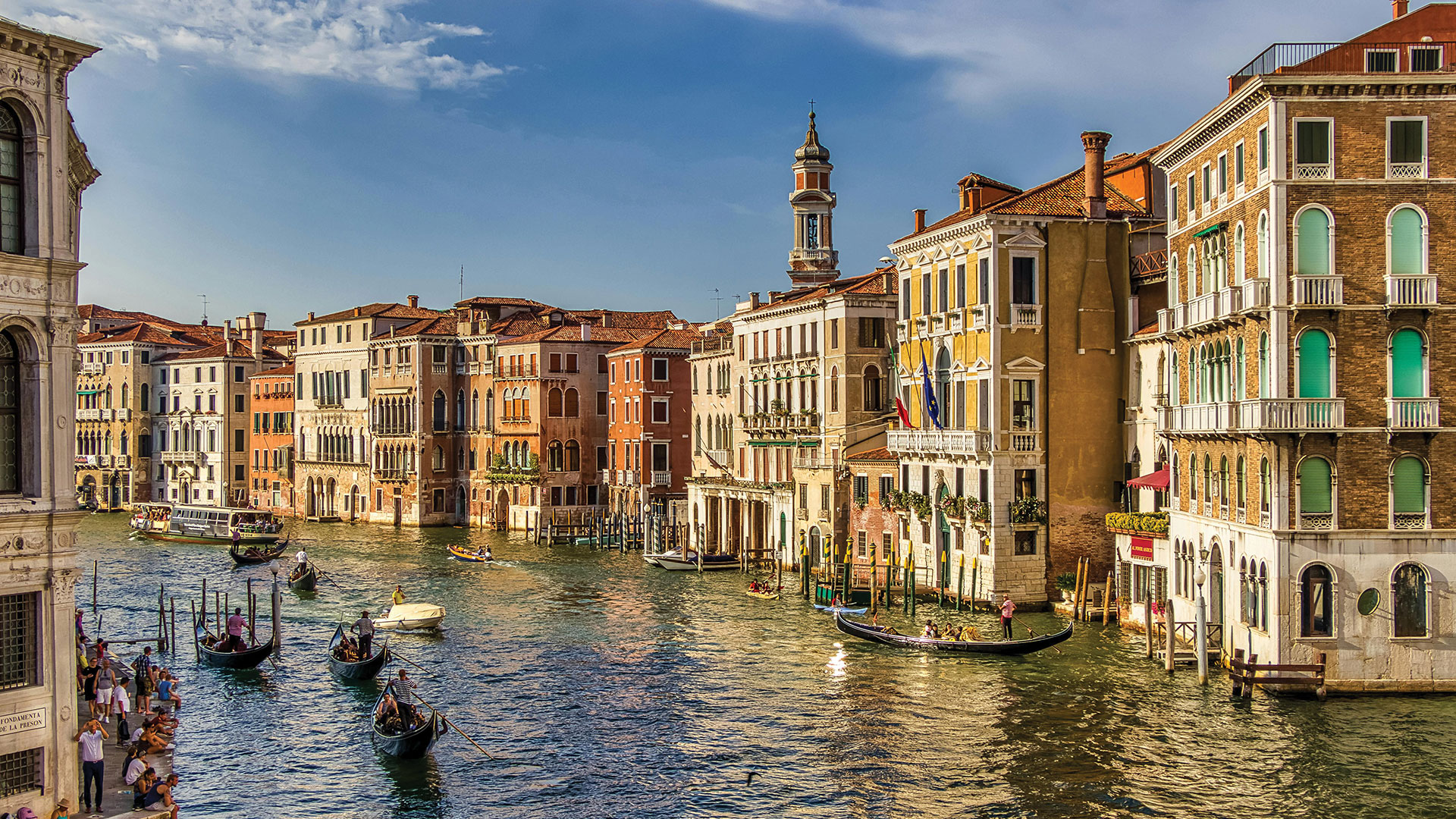The only city in the world constructed purely on waterways, Venice has a beguiling beauty. It has over the years provided an endless canvass for writers, painters and philosophers and the backdrop for haunting films. Packed with palazzi and other must-see cultural attractions, this most remarkable of Italian destinations oozes charm, with the lapping canal water leaving an indelible mark on bewitched visitors.
Perched upon more than 120 islands within a sheltered lagoon, the maritime melting pot was the centre of a formidable Venetian trading monopoly in the Middle Ages and Renaissance era; legendary 13th-century merchant-explorer Marco Polo called it home. Inscribed on the Unesco World Heritage List in 1987, the city has seen its population dwindle by more than half since the end of the Second World War to less than 50,000 today. Talk of its demise is nothing new, and Unesco has twice considered declaring this wonder of the world endangered as it combats a multitude of existential threats, from tourist overcrowding to subsidence.
Grand tour
The six districts of Venice lie either side of the majestic watercourse known as the Grand Canal, the main artery of the city. There are an estimated 3,000 alleys to explore and 400 bridges to cross. Ponte de Chiodo is the one remaining bridge with no parapet (side wall or rail).
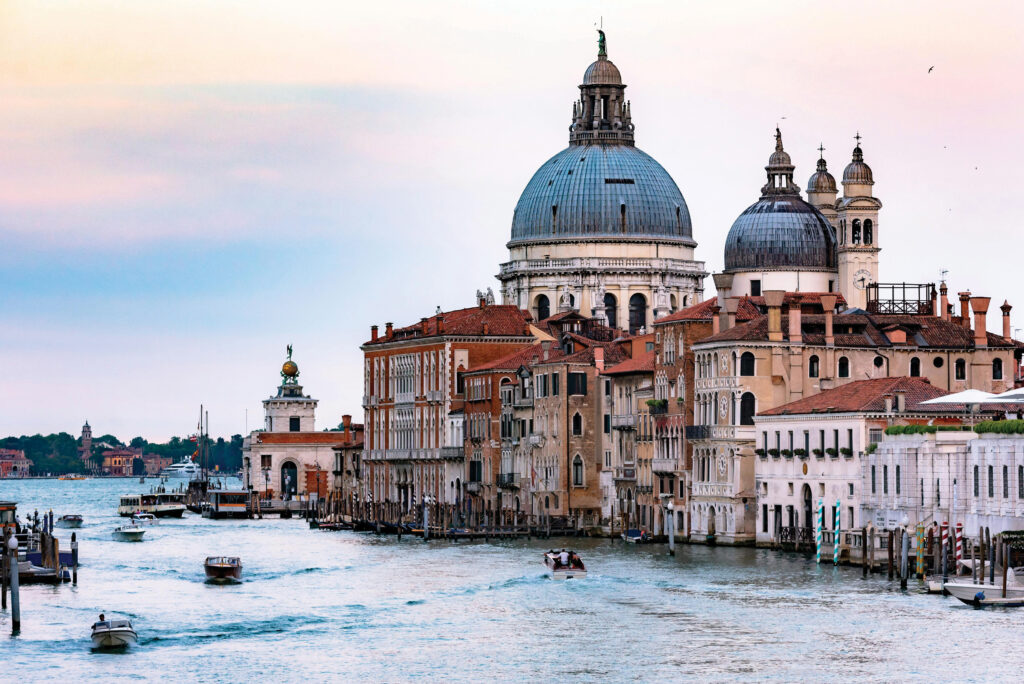
A voyage down the Grand Canal – Canalazzo to the locals – reveals more than 200 ornate palaces and grand houses lining the banks. The vaporetto (water bus) starts at Piazzale Roma and snakes through the city on waters full of colourful flotillas of gondolas, ferries, taxi launches, high- speed police boats and barges stacked high with fresh produce. Ferry line No. 1 takes in all stops and offers the best views. If possible, grab outside seats at the front or rear of the boat for the full journey to San Marco, Venice’s foremost district, then return in order to drink in the full scenic glory of the palazzi from the opposite direction. A night- time boat trip is perhaps even more magical.
Building bridges
The ride passes under some splendid bridges. Dating from 1588, the Ponte di Rialto is perhaps the most famous – an iconic eight-metre-high structure with a span of 28 metres positioned at the narrowest point of the Grand Canal. The bridge is the central focus of the city’s commercial hub, the Rialto. Here the wet market, full of luscious fruit, vegetables and fish, is a treat for the senses and has enlivened the quayside since medieval times.
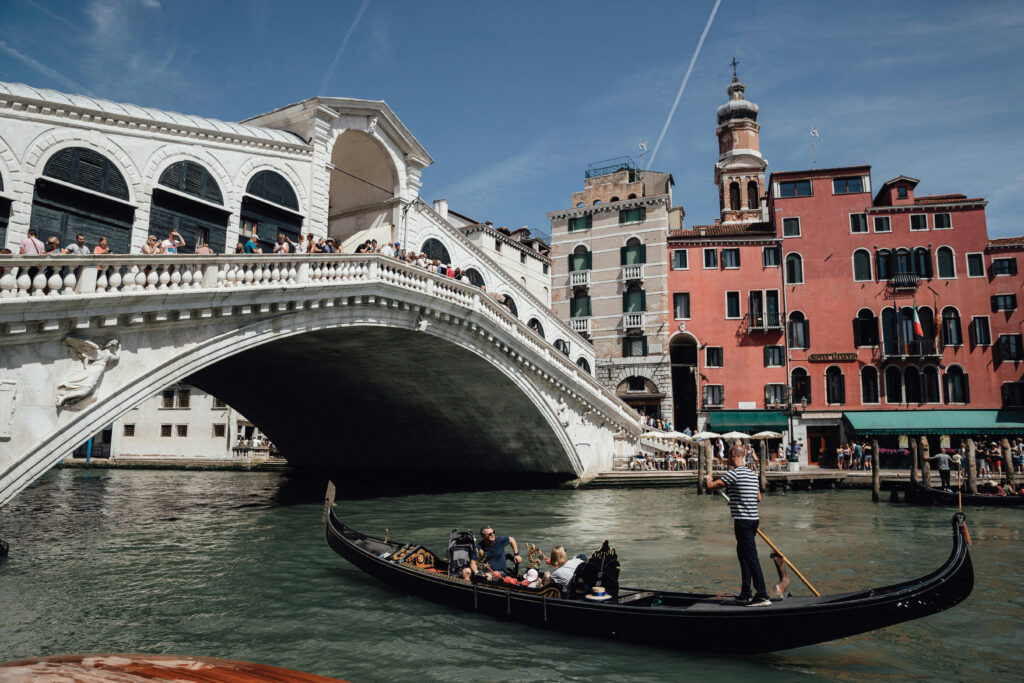
San Giacomo di Rialto, the oldest church in Venice, is located nearby. To cross the Grand Canal here board a traghetto, a large gondola in which passengers traditionally remain standing. No visit to Venice would be complete, of course, without floating along some part of the canal network in a black-painted, flat-bottomed, banana-shaped boat guided by an expert gondolier – musical serenade optional.
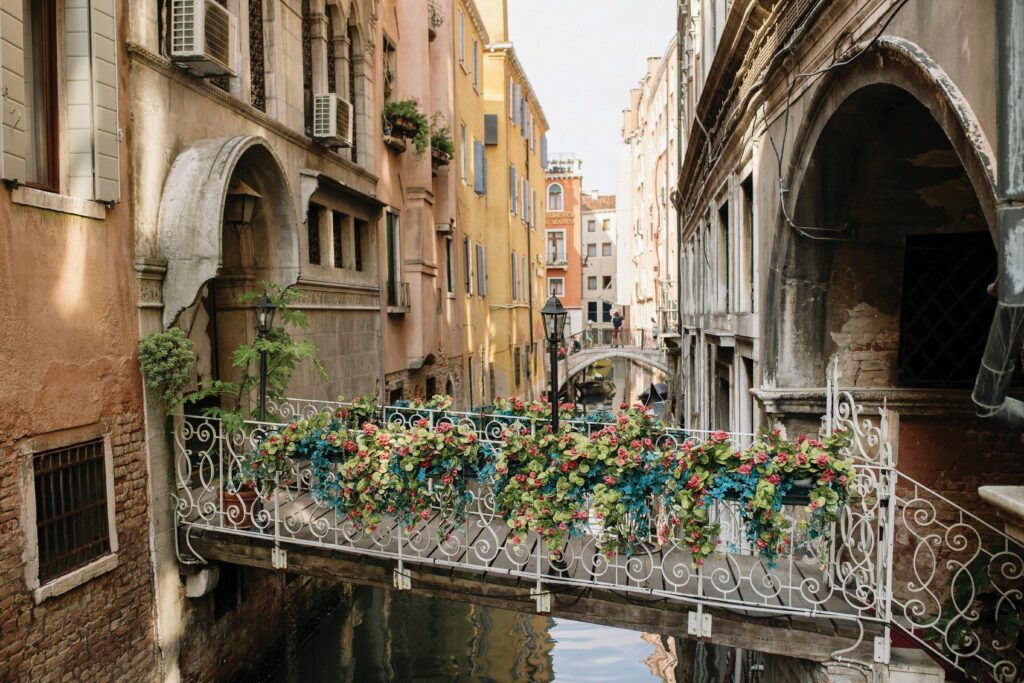
Another notable bridge on the Grand Canal is the Ponte dell’ Accademia. This wooden structure erected temporarily in 1932 has become a much- loved permanent fixture and affords superb views of waterborne life.
Masters of art
Riva del Vin, one of the few banks of the canal with pavement access, hosts a clutch of open- air restaurants and hotels. The colossal Baroque palace of Ca’ Pesaro houses the city’s modern art collection and is beautifully floodlit at night. Works by 19th- and 20th-century masters such as Gustav Klimt and Marc Chagall and a strong Italian assemblage are highlights.
Also located on the Grand Canal is Italy’s leading museum for 20th-century European and American art, the Palazzo Venier dei Leoni, which houses the Peggy Guggenheim Collection. The American mining heiress, who began amassing magnificent paintings while living in Paris in the 1920s, relocated to the 18th-century Venetian palace after the war.
Around the square
Piazza San Marco (St Mark’s Square) is adorned with monuments that bear testimony to Venice’s rich history. Here you will find the great Basilica di San Marco cathedral church, considered the perfect architectural fusion of East and West. Booking a guided visit beforehand is recommended to avoid the queues. The building has been replaced twice, with much of today’s church hailing from 1071, and it became the city’s cathedral in 1807.
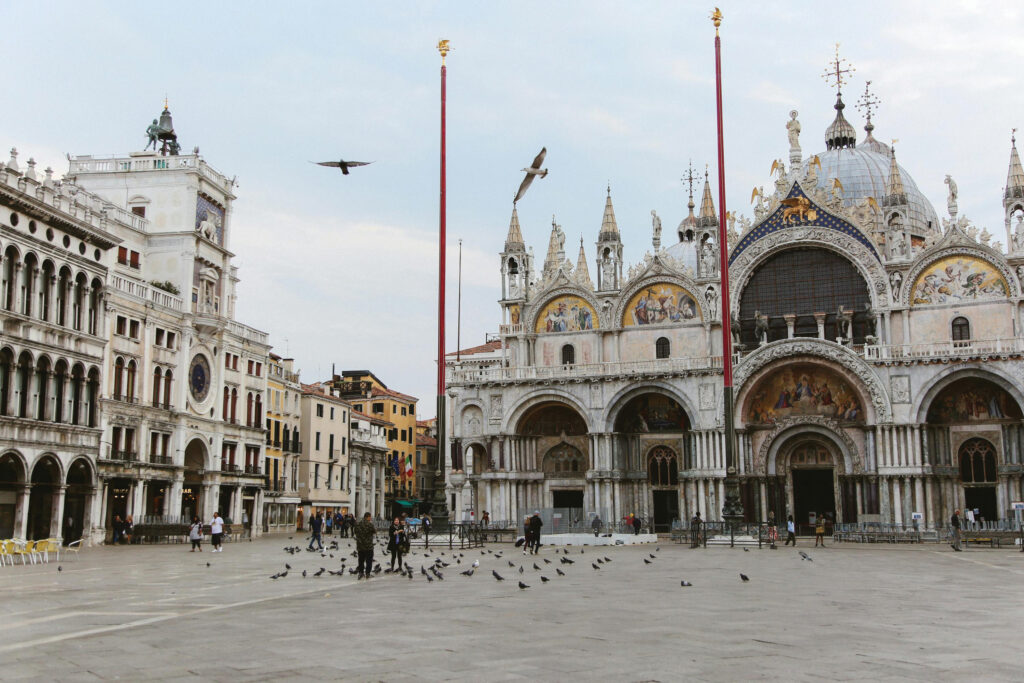
Striking exterior details include the original mosaic over the leftmost door – depicting the transfer of St Mark’s body from Alexandria to Venice – and Romanesque carvings above the central door. The interior is embellished with resplendent historical works of art. The Basilica Museum houses the famed quarter of gilt-bronze horses looted from Constantinople by Venetian forces during the Crusades.
Adjoining the basilica is the Doge’s Palace, a superb combination of Byzantine, Gothic and Renaissance architecture. Construction began in 1340 and it served as the powerhouse of the city’s rulers until 1797, when Napoleon’s occupation of Italy ended the Republic of Venice. The building became a museum in 1923 and contains terrific works from Venetian painters such as Titian, Tintoretto and Bellini.
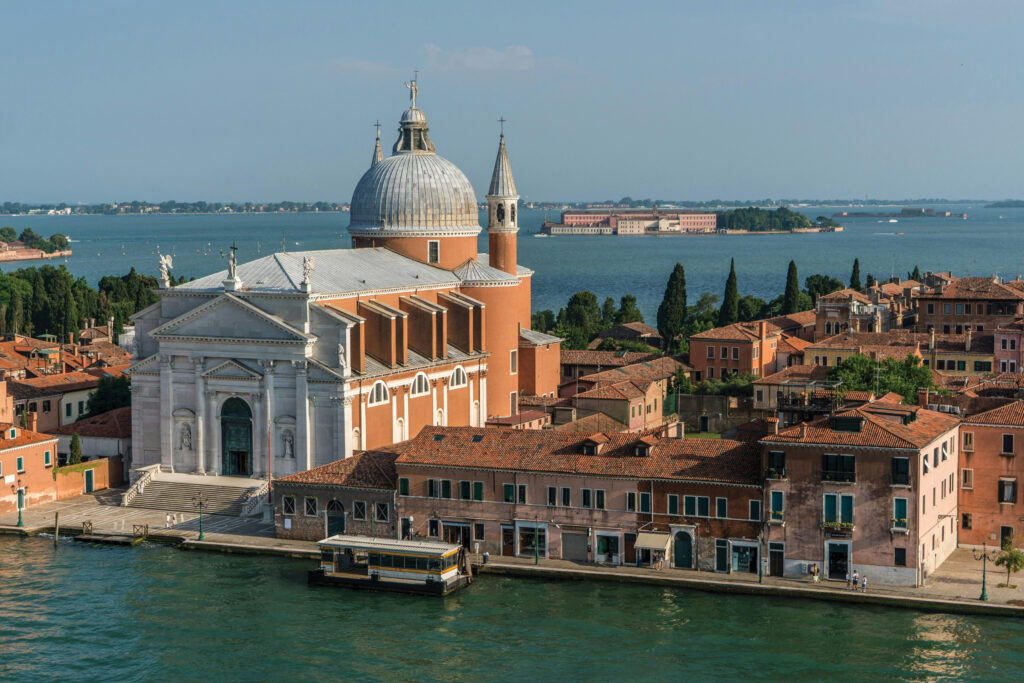
Blessed with many architectural styles, Campo Santa Margherita (St Margaret’s Square) is another lovely square. Its cafes provide charming rest stops to sit and soak up the bustling life of thriving market stalls.
Food with a view
Turning to dining delights, Venetian restaurants range in style from cool 18th-century refinement to rustic gentility. Venice embraces a wide range of foreign communities and this influence has given rise to Italy’s most eclectic and subtle cooking, according to many culinary experts. The elegant terrace of Grand Canal Restaurant at Hotel Monaco & Grand Canal in San Marco offers picture-postcard views over the lagoon. Venetian, Italian and international dishes are served including fish soup, vegetable risotto and scampi.
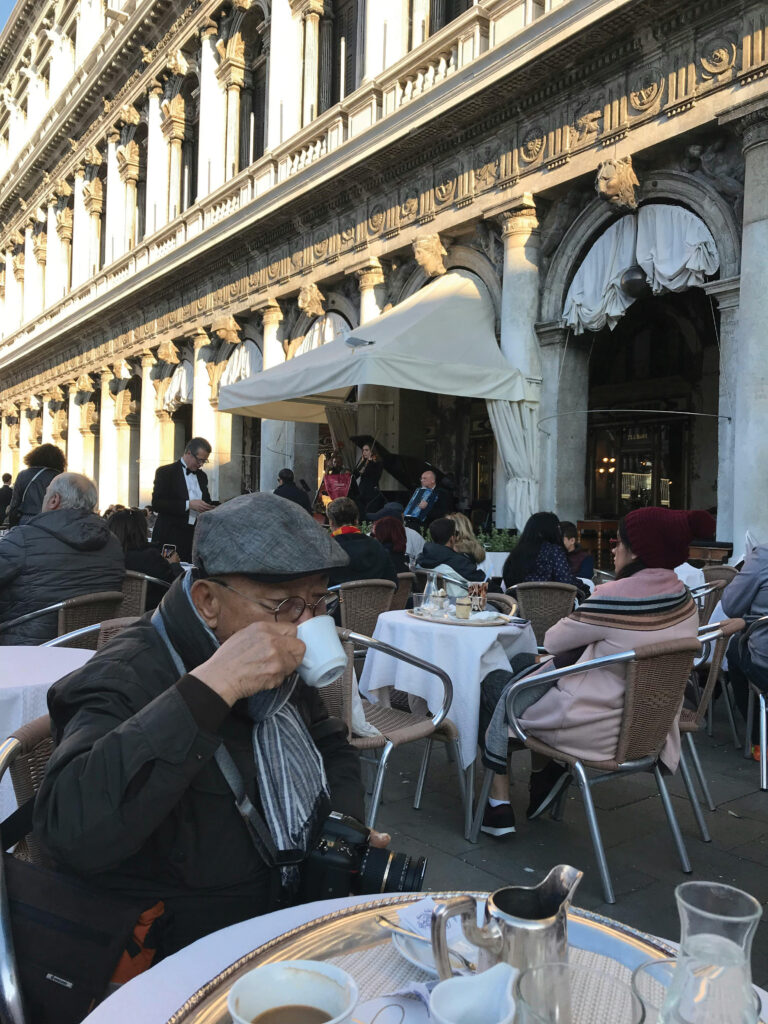
Next door is the legendary watering hole of Ernest Hemingway and many other writers, painters, artists and aristocrats. The success of Harry’s Bar has been attributed to personalised service and lack of imposition. The Bellini aperitivo is said to be invented here and the food is good, too, with an emphasis on classic Italian dishes.
Originally a 1720s coffee house, Antico Martini is another Venetian institution. Located in San Fantin Square beside La Fenice Opera House, it is a lovely place to sit and watch the sun go down. The warm historical ambience, excellent Italian menu and wonderful background music draw in the crowds.
Festia pizzazz
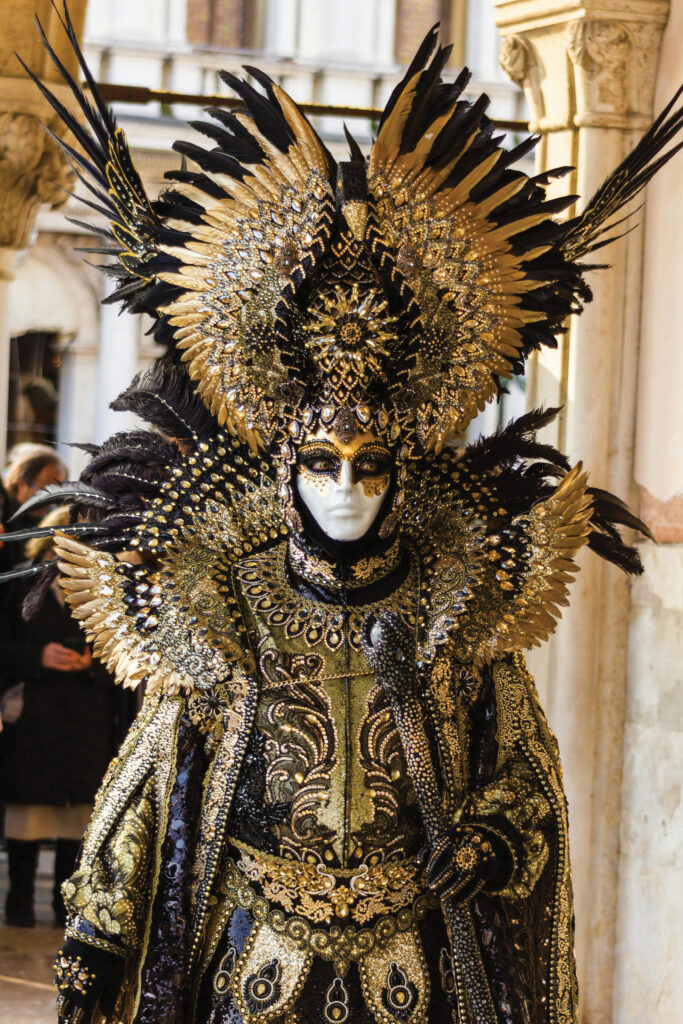
Venice is host to a multitude of fantastic festivals. The most famous, the Carnival, is a spectacular parade of masked, caped and gowned revellers staged during the 10 days prior to Lent. In 2024, the city’s internationally acclaimed film festival will take place from 28 August to 7 September, while music lovers can enjoy evening concerts at various venues – in palaces, churches and the open-air – throughout the year. The word regatta originated in Venice, and an amazing historical water pageant precedes a competitive race around the lagoon on 1 September.



